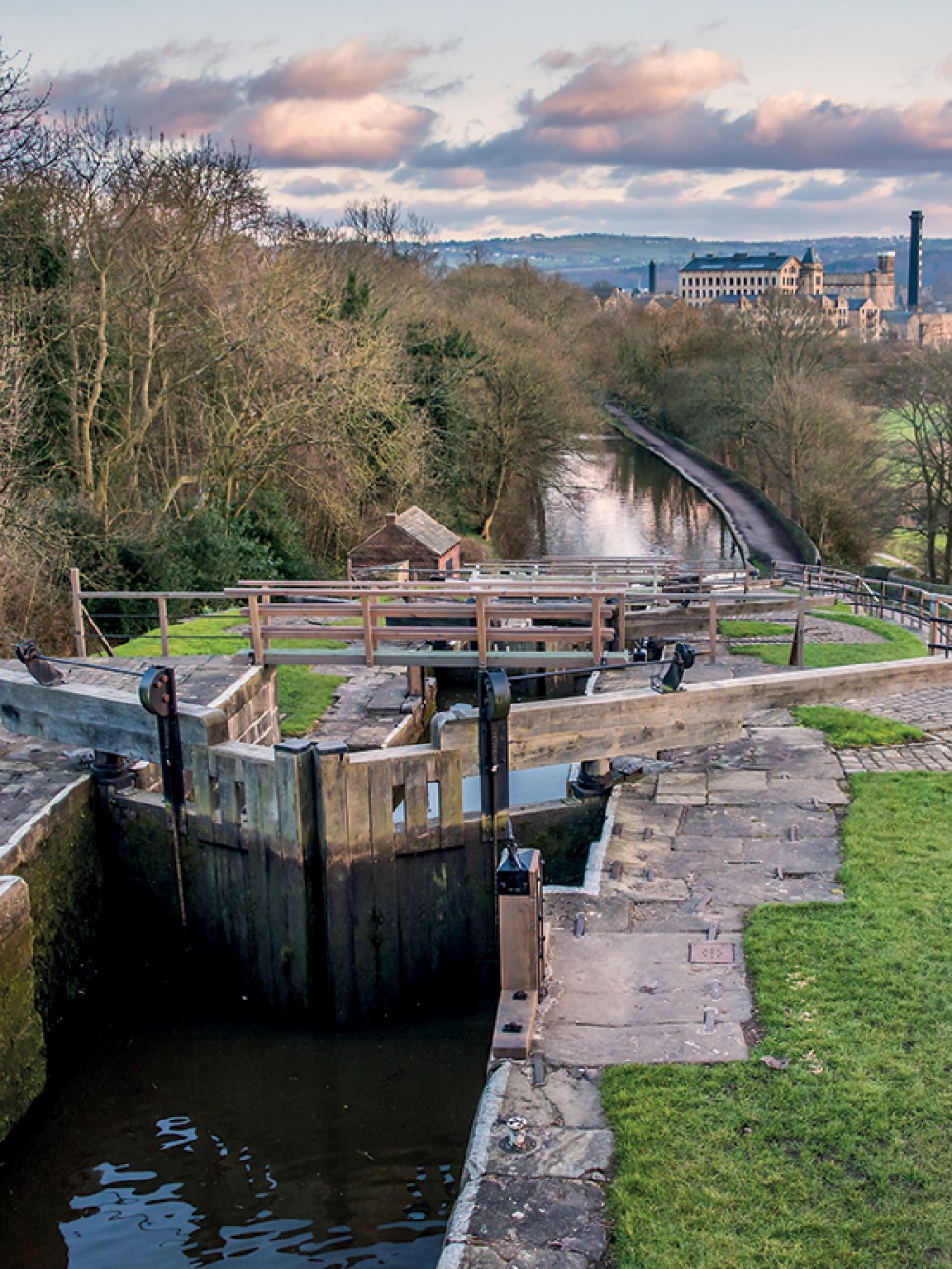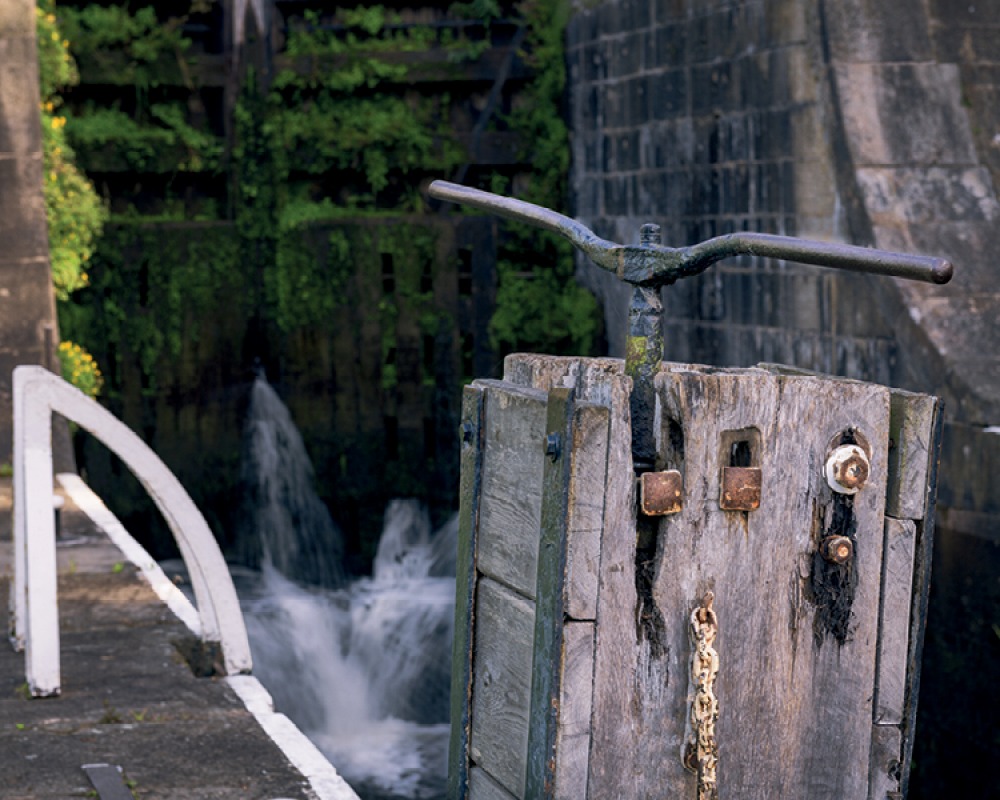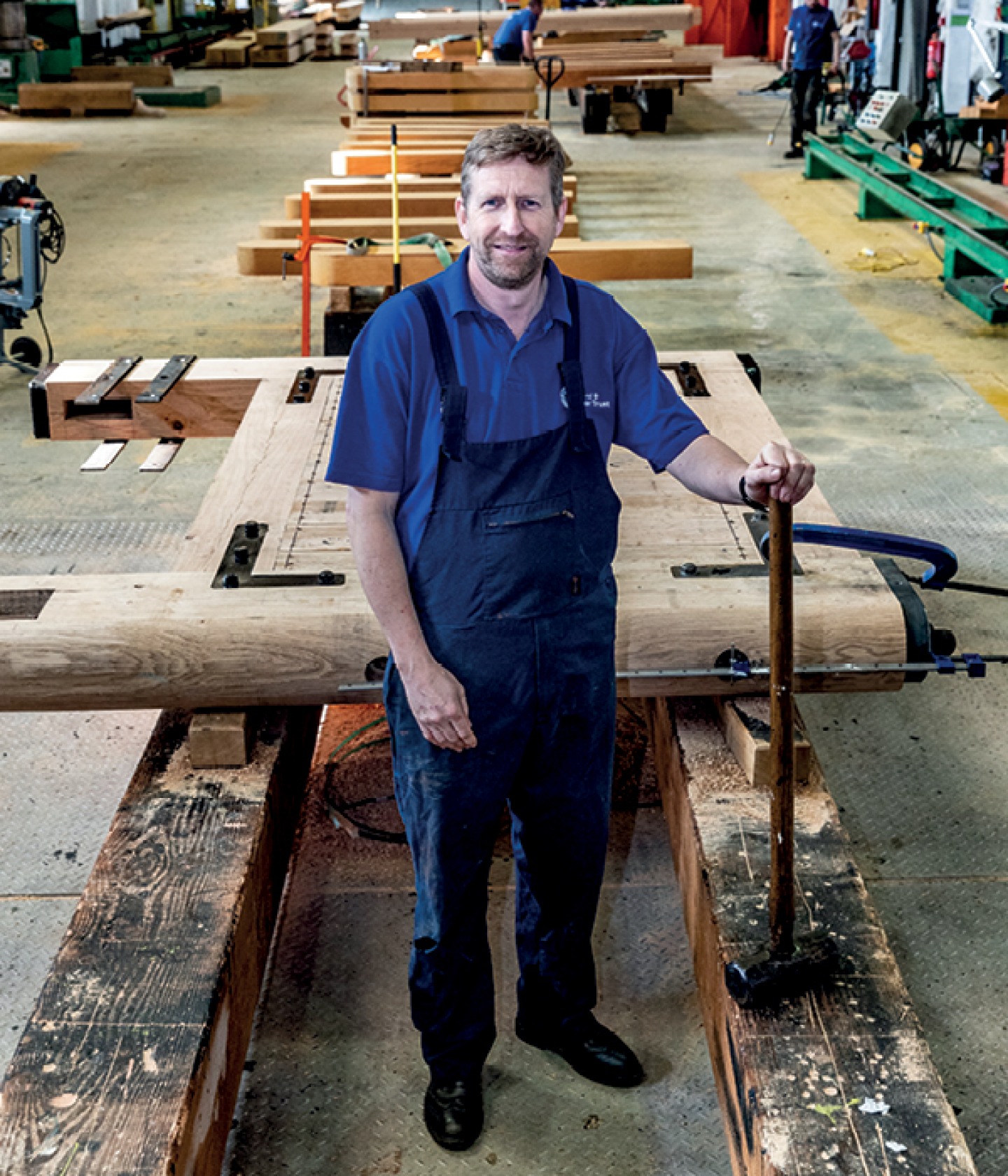Discover All About the Painstaking Restoration of Bingley Five Rise Locks

Following a £55 million restoration and maintenance programme with the Canal & River Trust, Living North speaks to Stanley Ferry Workshops supervisor Andrew Bayliss about their labour of love crafting the new lock gates
Originally constructed in 1774, the seven metre tall lock gates are some of the tallest in the country, and 200 years on, the Canal & River Trust, with help from Stanley Ferry Workshops in Wakefield, have toughed out a bitter winter, storm Eunice, and Covid to create new gates for the lock using traditional handcrafted methods of production.

‘The lock is such an important site for visitors, our boaters love to say that they’ve been up the Bingley Five Rise – it’s something on their bucket list to do,’ says Andrew, the workshop supervisor at Stanley Ferry.
‘We have people coming all the way up from down south just to travel up them, and most of the time these days you find it’s just used for pleasure. On the gates we have lock keepers that guide the boaters through, but it takes between half an hour and 45 minutes to get up the full flight.
Read More: Guided Walks in the North East For All The Family To Get Involved In
‘To be honest with you, I don’t even understand how the workers would’ve physically completed it when they were first constructed. All the engineers and diggers and carpenters and stone masons they would’ve needed, I really don’t know how they did it in those days,’ Andrew marvels.
‘Even the sheer size of the stonework is amazing. How did they physically do that 200 years ago? It’s incredible, it really is,’ he continues. ‘The entire canal network is just fascinating, 200-odd years ago is an unbelievable time to have achieved that, and those talented people gave their lives to it.’
What makes this specific feat of engineering so impressive isn’t just the lock’s size, but the very bespoke specification required for each gate. Lock gates have to be crafted by hand to fulfil every minutia of the building plan, making sure the gate doors can handle the water pressure without buckling.
Read More: 4 Scenic Summer Walks in Yorkshire
‘Every lock gate is unique. Every single gate is different in height and width – no two are the same,’ Andrew explains. ‘The way we manufacture them is the same as 200 years ago, we just have more mechanical means available to us now. The basic construction of the lock gate is exactly the same.

‘We have certain records of the old gates in a records department in Leeds which stores a lot of the historical information. Quite a lot of it was in paper format, but now they’re starting to digitise it,’ Andrew elaborates. ‘Being craftsman, we know roughly how they were manufactured, and when we go out and measure we find out specifications first hand from the older gates that are currently in place.
When you’ve done it enough and gain that experience you can tell if the gate in that chamber was previously manufactured wrongly. You can then alter that gate, in theory, to your new design. Hopefully then you can improve on it and make it better.’
Read More: Why You Must Read Tricia Cresswell's Debut Novel
Lock gates have to be changed every 25 years so that they’re kept to a safe and efficient industry standard. An expensive and skilled task, these gates are lovingly laboured over up and down the canal to preserve their history and to be enjoyed by punters.
Each of the five locks that make up Bingley Five Rise acts like a step in an extremely large staircase, lowering and raising water levels within each individual lock separated by the gates – lifting the passing boats to the top of the rise. This is the steepest flight of locks in the UK, carrying boats to a rise of 18.03 metres over a total distance of 98 metres.


‘If you don’t get the water pressure on one side of the lock exactly the same as the other, then the lock will not physically open – even to a degree of 100ml difference in water level – simply because of the amount of water pressure.
Once it is equal on both sides of the gate then it will open and the boat can go into the lock chamber,’ Andrew explains. ‘The gates then close behind the boat and a ground paddle opens up to take water from above to fill the chamber, carrying the boat to the same level as the next pound lock. This process then repeats all the way to the top of the famous Five Rise.’
Now that the project has wrapped up, Andrew has had time to reflect on the pride he feels in being able to contribute to this long legacy of Yorkshire craft – and knowing that the locks will be fighting fit for the next generation.
‘It’s always nice to go and see what you’ve physically made. The craftsman here at Stanley Ferry are very proud that these gates are going to last another 25 years. It’s a lovely thing to see, especially when you know that it’s all fitting correctly to such a high standard.
‘I feel proud as an organisation for what we do to conserve these historic landmarks. I’m proud to keep the lock working for future generations to come and learn about the waterways,’ Andrew goes on. ‘Because of this continued work, they’ll be there for another 200 years for our children to see and understand the history of the canals. If we let them fade away, we won’t see the effects of the industrial revolution and the wonderful achievements from so long ago.’
If you would like to travel up the Bingley Five Rise Locks yourself, go to canalrivertrust.org.uk to plan your journey, or you can donate to the Canal & River Trust to help conserve our historic canals and their locks.







